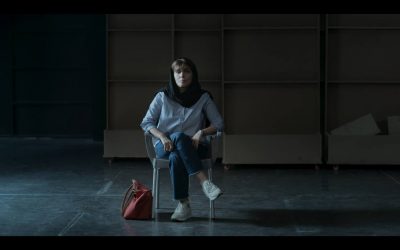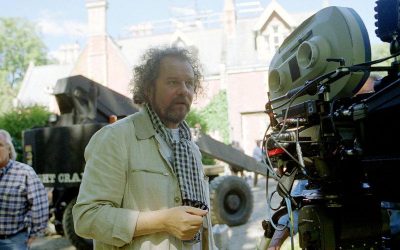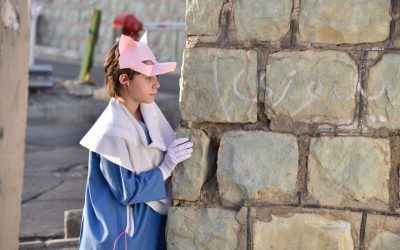Author: Ali Zokaei
Introduction: Zones of Chaos
Our world is full of chaos, which comes in different qualities, intensities, and proportions. Every space, land, place, and time is subject to chaos. Based on this variability, it can be said that the “Middle East” has experienced a state of pure chaos for years; a form of “pure sonic and luminous condition.” For instance, the moment of an explosion is a tangible example of such a state, defined only by light and sound. Therefore, “chaos” in the Middle East takes various forms, with frequent new disasters or occasional liberating events altering the situation. The nihilism found in fundamentalist groups, which oppose other forms of global power, indicates that the “chaos” present in society has deprived it of the creative power to act. Instead, fundamentalist groups, representing the chaos of the capitalist world, have emerged. They exist within the prevailing chaos and are a part of it. However, their response to chaos is a return to origins. Since a return to origins is impossible, a kind of nihilism and inaction dominate the situation.
Félix Guattari delves into the division that has fractured the standardized state of capitalism: on one side, nationalist and fundamentalist groups, and on the other, autonomous and liberation movements. This division embodies chaos, but the paths they follow lead in different directions. Therefore, chaos is not necessarily a negative or positive force but represents the openness within existence. Within this framework, different paths can emerge. Guattari sees these two divisions as distinct ruptures within the system and contrasts them with each other.
The films, stories, and theories produced in our contemporary situation are increasingly ineffective. For instance, Elia Suleiman is a minimalist filmmaker who portrays the chaos of Palestine in a colonial form. Similarly, some post-colonial theories support proxy groups that cause chaos through reactionary centralism. However, these groups lead to a dead end for action and have hindered liberation movements, aesthetic creation, and politics, perpetuating war and resulting in nihilism and the representation of origins and foundations. Chaos is considered an open state that precedes any form of order. Creation can be seen as emerging from within chaos. If we view chaos as an inherent plane, creation manifests this inherent plane through thought, the sensibility-energies of art, and shared politics. This form of inherent action/creation cuts through the plane of chaos and brings about another existence based on creation. Drawing from the philosophy of Deleuze and Guattari, chaos is seen as an inherent existence and a condition for creation. In Deleuze’s philosophy, chaos is an openness to “becoming,” representing a kind of transformation with intensified speed and the dissolution of connections between determinations. Chaos is a vast mass of formlessness from which the becoming of existence emerges, and Deleuze, following Nietzsche, sees it as the eternal return to existence. The play and relation of forces arise from within such a state. Therefore, chaos, according to Deleuze and Guattari, is formless. Chaos should not only be seen negatively; it is a plane for composition and creation. The examples mentioned earlier regarding the region’s state and art based on representation can help clarify the distinction between creation as a vector based on unrepresentable transformation.
In the current state, they are no longer involved in transformation; instead, they embody the origins, serving as the basis for representation within the chaotic state to resolve it. Therefore, artistic composition emerging from chaos opposes the foundationalism of origins and the chaos represented by capitalism and power. Ahmad Ghossein’s films cannot be understood within previous Western frameworks or solely with native imagery. One can also think of his films as a third condition or composition within chaos – images arising from chaos, and fragmented narratives in four modes. For example, in the film “Forth Stag,” there is the memory of the lost and the expression of the Lebanese woman (mother) guarding under the bridge in a state of frozen time, and a schizophrenic-paranoid space in the film’s conclusion expressing states produced in the Middle East chaos situation. In other words, one cannot marginalize the Hezbollah flag in the film “Fourth Stage” or the curse and condemnation of the delusional old man in the film “The White Noise” to the benefit of a generic whole. They are signs and figures produced from within chaos, war, and domination. Therefore, to get closer to Ahmad Ghossein’s films, one must try to get close to the chaotic situation. Chaos is not a supreme goal for artistic productions; rather, the chaotic situation is the way to reach art, a condition for thinking beyond current determinations in the domains of power, colonialism, and authority. In a sense, it is a condition for creating a style.

Ali Zokaei
Gilles Deleuze, in his book “Cinema 2: The Time-Image,” defines the modern world as the disappearance of action (act); life without action, and the crumbling of belief in changing the world. Losing our subjective relationship with the world, becoming alien to ourselves. Deleuze traces this collapse through the identification of modern films. In the modern condition, the personal movements of characters no longer shape drama. Image perception, image action, and image movement no longer have meaning. Rather, the production of subjective time from within chaotic matter fundamentally shapes modern cinema. Past no longer resides in the sequence of the present; characters are not defined by their actions but essentially take shape through inertia and being stuck in a deadlock. Take, for example, the film “All This Victory”; each of the five characters is trapped in the deadlock of war and essentially cannot act; or the black migrants in Pedro Costa’s four films who no longer feel, protest, or act. They are figures trapped in a deadlock; in these films, action-image does not determine time; rather, time itself is an expression of pure form. Time is situated in a gap between space and linear sequence. For instance, in the films of Marguerite Duras, time is separated from action, breaking the chain of cause and effect based on the actions and reactions of the characters. Leaps, the gap between the monologues of characters and images, alienation from the surrounding world, and so forth are some of the shaping elements of a form that, from within and by cutting through chaos, creates modern cinema. In other words, to elucidate the issue of chaos and artistic composition from within it, one can refer to neorealist cinema. Cinema arrives at a new composition in a unique historical situation; these compositions are created by cutting through the chaos after World War II; these compositions are examples of creation based on becoming within the chaotic situation. Modern cinema is also inherently linked to the issue of chaos and alienation from the world; it has emerged from within it, just as in the paintings of Francis Bacon, figures emerge from chaos; just as the cinema of Duras, Godard, and post-war Italian cinema are compositions within the chaos plane. In Duras’s cinema, time, figure, and narration serve a different purpose compared to classical cinema. Unlike classical cinema, where time and the entire image and sound are subservient to the actions of characters, in Duras’s cinema, wandering, dancing, and bodies that express themselves are not subservient to action. Instead, aimless wandering makes the character subservient to the passing of time. According to Deleuze’s statement in Cinema 2, the expression of time now swaps with the past. Ahmad Ghossein’s films cannot be defined within a genre. Creative and innovative cinema in the Middle East cannot be placed within a genre and historicized because it emerges from chaos. For example, the film “My Father Is Still a Communist” uses this logic in shaping time. Memories do not fit into a past-present sequence. Instead, the past is a whisper articulated in the present imagination. The voice of the mother is a pure expression of the whisper of memories. There is no need to generalize this time sequence; a single image is itself a pure expression of past time.
1- the chaos – scene four
“The magician moves slowly towards his disappearance, towards his vanishing from the confined geography of his myth.”
In one of the visual essays of the film “Scene Four,” it is stated that the branch opener is in motion towards his death. He is disappearing from a geography closed by myth; he is vanishing. The film “Scene Four” by Ahmad Ghossein does not follow a linear or modern narrative. Instead, it relies on a narrative of exploration and a form of play. Much like the character in the film potentially pulls the narrative towards a fluctuation between documentary and playfulness. Play, myth, and witness are three interwoven elements in the narrative fabric of “Scene Four,” which is experiential. On one hand, there is a transformation in the geographical level that the camera captures moment by moment. In this moment of disorientation, both nature and the camera lens also undergo oscillations. On the other hand, the magician can also be perceived as a subject at the moment, one who seeks to transcend his demise and find meaning in his existence through play.
In one of the image texts, it is mentioned that at the moment of disappearance, one can perceive the branch and the game in a frozen movement, in a geography being devoured by myth. The film and the game do not want to succumb to this disappearance. Therefore, relying on the game, multiple images, and texts, “Scene Four” can be seen as a form of exploration and resistance. In the opening of the text, the issue of turmoil, passing through it, and cutting through the page of turmoil were mentioned. The shaky images from southern Lebanon, where its nature has been disrupted; the character in turmoil, and the magician and the illusion of a myth cast upon existence and land read as a form of pure chaos. Geo-political turmoil in southern Lebanon!
Ahmad Ghassan’s most experiential film does not simply observe the chaos; it fully embraces it. The film’s images and texts represent pure chaos, with no attempt to engage with past events or impending disasters. Instead, the chaos is ever-present and has already occurred. The film uses multiple images to depict proximity to disasters, but it does not aim to represent them in their entirety. Ahmad Ghassan attempts to create a different kind of chaos from within the disasters. The film’s narrative is a continuation of multiplicity, mapping out chaos. It presents the illusion that arises from the fear of the myth, such as the erosion of mountains, the display of Hezbollah flags, and the transformation of the nature of the south. Ghassan aims to depict this multiplicity and the portrayal of a situation that reproduces the chaos and confusion of space. He follows this chaos and hallucination in all subjects and their lives. As a result, an indeterminate silence dominates the film space, and the text pieces, such as shocking narratives, shape the narrative. The prevailing myth is a state of fear, which is a form of transcendence that must be overcome to dispel illusion and battle fear. The myth in the contemporary context serves as a representation of chaos. Chaos, as mentioned earlier, precedes thinking and creation. However, the myth present in the hallucinatory images and texts represents this chaos in absolute fear and decline. Hezbollah in Lebanon is a form of representation of chaos. Therefore, this multiple narrative, shaped by the subject (the magician), the environment (the nature of southern Lebanon), and the text, expresses chaos in an indistinguishable multiplicity. Each frame of the film can undertake a form of expression. The life of the subject, from the destruction of the environment to the transformation of nature from the role of myth, and their relationship with illusion and chaos, has become indistinguishable. For this reason, the film “Scene Four” also has multiple indicators that are neither vertically unitary nor distinguishable from each other.
2- Recycled Time
The Middle East region’s memory and its narrative are closely intertwined with themes such as war, occupation, and political life. In his book “Homo Sacer: Bare Life and Sovereignty,” Agamben explores why the figure of Homo Sacer – someone who can be easily killed but not sacrificed – is no longer exceptional in modern times, unlike in ancient civilizations. Perhaps this is because we all live in a state of bare life, and thus, we have all become Homo Sacer. This phenomenon is particularly relevant to our region, where we all exist within internal and external constraints and occupations. Therefore, the fusion of memory with politics is not an anomaly but rather a continuation of our biological existence. For this reason, any act of remembering can be a form of resistance against the current bio-political power structures, which force us to forget the impacts of conflicts, wars, and occupations. Films that use a documentary format to narrate the past aim to reclaim lost time. Filmmakers strive to capture the essence of the past and convey it into their present reality, reflecting on their current situation. “My Father Is Still a Communist” exemplifies this power to narrate the past while contemplating the present as a creative act. The film portrays the past as both personal and collective. As the camera focuses on Ahmad Ghossein’s mother, she becomes the narrator of history, symbolizing the solitary figure in the house. Ghossein’s creativity lies in not reducing the mother’s narrative to merely representing the father. The family is not reduced to a singular historical unit; rather, its elements interconnect to shape an incomplete yet multifaceted whole.
In “My Father is Still a Communist,” the father represents the past, the mother is the narrator of the present, and Ghossein and the history of Lebanon are intertwined, each contributing to a dual narrative. The absence of the narrator of memories and lost time is compensated by the images that serve as substitutes. These images encompass a historical spectrum that brings events along with it. The past carries a hiddenness within it, forming a form of concealment, which the mother endeavors to reclaim and narrate, transforming its outcome into cinematic form. Ghossein avoids imposing centrality on a grand narrative but instead arranges narrative elements, providing them with structure. “My Father is Still a Communist” delves into the art of listening to and interpreting narrative signs. The mother, serving as the narrator, embodies the language of uncovering the submerged.
3- We have become prisoners in our own homes.
If we were to encapsulate our situation in the Middle East in a single sentence, perhaps the most fitting one would be: we all find ourselves confined within our dwellings.
This marks the most dangerous strategy of the Israeli occupation government. The widespread use of deadly politics has affected all aspects of Palestinian life. “All This Victory” is a film that captures a profoundly sensitive and poignant moment in human existence in the Middle East. In 2006, conflict erupted between Hezbollah in Lebanon and Israel. A ceasefire was declared for a day during this conflict, but it quickly collapsed, and hostilities resumed on both sides. The film “All This Victory” depicts this crucial moment in Lebanon’s history. Marwan, the film’s central character, sets out to find his father during the ceasefire but is unable to do so. Upon reaching the village, he is met with scenes of devastation and ruins and encounters two acquaintances at a house amidst the chaos. Despite Marwan’s determination to continue his search, the resumption of hostilities by Hezbollah and the Israeli army, marked by bombings, destruction, and occupation, thwarted his plans. Fear and anxiety grip the area, leaving everyone in a state of confusion. Even Marwan’s attempt to flee in a car is intercepted by a woman and her children, who commandeer his vehicle and escape. Ultimately, Marwan is compelled to remain in the house as the war unfolds, with the glow of bombs illuminating the surroundings. Much of the film unfolds within the confines of the house. The interplay of color, light, actor performances, and camera movements creates a visual narrative that vividly conveys the prevailing anxiety, suffocating and imprisoning the inhabitants. Meanwhile, the filmmaker juxtaposes the war-torn exterior with the sanctuary of the house, symbolizing the collective impact of the conflict on its occupants. By delving into the internal turmoil within the household, the film explores the psychological toll of war, mirroring Marwan’s restless slumber. Moreover, by portraying a microcosm of war within the home, the filmmaker opens avenues for a radical and contemporary aesthetic rooted in the chaos of conflict. “All This Victory” emerges as a testament to the chaos that engenders diverse narratives. It captures the essence of a defined reality emerging from the midst of pure disorder. The film’s aesthetic, characterized by hues of yellow and murky tones, depicts figures in states of agitation, laden with illusions and anxieties, yet tinged with hope. It transcends mere chaos, with each element – figure, color, sound – representing a facet of the disorder that has manifested within this setting. The characters are trapped inside the house and cannot leave. The light in the house is fading, and yellow dominates the color scheme. People want to leave, even at the cost of their lives. The house has become a form of contemporary bio-political internment, where the line between vegetative and political life is blurred. The Israeli army has developed various strategies to turn this internment into a camp for all Palestinians, essentially making life a camp for them. This approach creates a complete politics of death for Palestinians, where Palestinian deaths are no longer exceptional but rather considered a recurring norm. This strategy is not limited to Israel and its current politics of death; similar policies are pursued across the entire region, from the Islamic Republic to Hezbollah in Lebanon, to establish a camp within homes. Ahmad Ghossein effectively translates the anguish of being ensnared in this policy into the aesthetics of his film, depicting the strange presence of individuals on the middle floor, with the Israeli army upstairs and Hezbollah in the underground tunnels. People show no reaction except to stay indoors. They are no longer narrators of ideological heroics that we see in national productions and the like; they are precisely positioned within the chaos. Therefore, they do not act in such a situation; they are trapped in a bipolar camp of power that has kept them confined to the closed situation.











